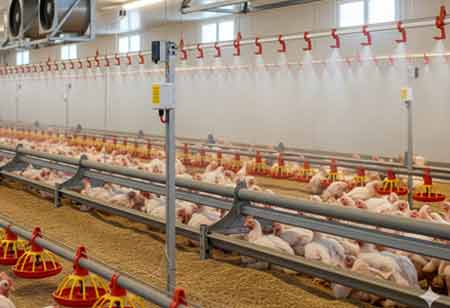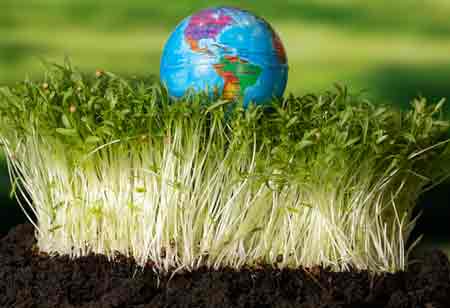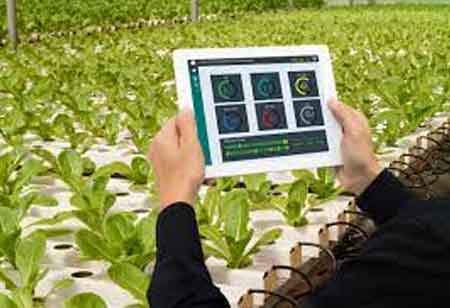Thank you for Subscribing to Agri Business Review Weekly Brief
Circular Economy's Role in Transforming Agricultural Resources
With resource depletion and environmental degradation becoming global issues, the circular economy is emerging as a revolutionary alternative to agriculture.

By
Agri Business Review | Wednesday, January 03, 2024
Stay ahead of the industry with exclusive feature stories on the top companies, expert insights and the latest news delivered straight to your inbox. Subscribe today.
Circular economy transforms agriculture through policy incentives, research, and farmer networks, fostering resource recovery and sustainable bioproduct development.
FREMONT, CA: With resource depletion and environmental degradation becoming global issues, the circular economy is emerging as a revolutionary alternative to agriculture. In contrast to modern agriculture's linear take-make-dispose paradigm, the circular economy imagines a closed-loop system in which waste is reduced, resources are reused, and value is extracted at every turn.
Conventional farming depends on outside resources such as water, herbicides, and synthetic fertilizers. These inputs, frequently obtained from non-sustainable sources, devastate the ecosystem by causing greenhouse gas emissions, water pollution, and soil deterioration. The linear approach also produces Significant agricultural waste, ranging from crop residues to animal dung, further taxing the environment and squandering priceless resources.
By placing a strong emphasis on value creation and resource recovery at every stage, circular agriculture upends the conventional linear chain. Reducing external inputs by promoting biodiversity, nutrient cycling, and natural pest management are important tenets.
To close the nutrient loop appropriately, the strategy involves recycling and repurposing organic waste, such as crop leftovers and animal manure, to create nutrient biogas and fertilizers. Furthermore, circular agriculture minimizes post-consumer waste, improves soil health through composting, and rethinks product design to include biodegradable and compostable materials. Moreover, the ingenuity goes into producing useful bioproducts, such as bioplastics, biofuels, and chemicals derived from agricultural waste. In addition to replacing alternatives based on fossil fuels, this gives farmers access to new sources of income and strengthens the agricultural ecosystem's ability to endure and prosper.
Agricultural waste can be a valuable resource in the circular economy context. Examples include minimizing reliance on resource-intensive feeds like soy by turning defective vegetables and food waste into nutrient-rich animal feed. Animal dung breaks down into nutrient-rich digestate for soil enrichment and biogas for energy through anaerobic digestion, closing the nutrient loop and substituting synthetic fertilizers.
Crop leftovers provide an additional option, as lignocellulose can be transformed into biodegradable bioplastics, which offer a sustainable substitute for plastics derived from fossil fuels. Furthermore, algae grown in wastewater treatment systems can produce biofuels that absorb carbon dioxide and provide a renewable energy source. These examples only hint at the possibilities of circular agriculture. With the use of biotechnology, creative processing techniques, and cooperative networks, resource recovery and the development of bioproducts are virtually boundless.
By putting laws and subsidies into place, governments act decisively to encourage the development of bioproducts and the recovery of resources. In addition, they offer financial assistance to farmers who are implementing circular farming methods. Research institutes regularly participate in research and development projects essential to advancing circular agriculture. The main goal of these projects is to create novel technologies and procedures for effectively transforming waste into beneficial bioproducts. Furthermore, knowledge-sharing networks and farmer cooperatives are becoming crucial parts of the circular agriculture scene.
Collaborative networks assist farmers by sharing best practices, providing technical support, and opening up markets for the bioproducts produced by circular methods. This cooperative strategy guarantees a thorough and encouraging atmosphere for the general implementation of circular agriculture techniques.
Agricultural circular economy adoption aims to create a more robust, sustainable, and just food system rather than merely completing the resource loop. Circular agriculture offers a viable way forward to a time when farming and food will benefit people and the earth by reducing environmental impact, giving farmers new alternatives for income, and encouraging a closer bond with the land.





